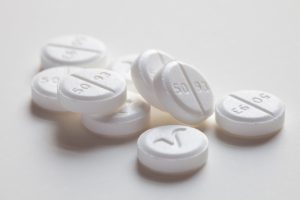Even in Low Doses, Prednisone Creates Insulin Resistance

Long-term use of prednisone, even in small doses to relieve inflammation related to rheumatoid arthritis (RA), contributes to insulin resistance in skeletal muscle and may lead to increased incidence rates of diabetes and cardiovascular disease.
These findings by Kim M. Huffman, MD, PhD, a Duke Health researcher and physician at the Durham Veterans Affairs (VA) Medical Center, emerged during a project developed to identify evidenced-based exercise interventions for individuals with RA.
Using an intravenous glucose test, the project examined insulin resistance in patients with RA who had a wide range of disease activity and were taking a variety of drug combinations. The patients were being treated at Duke, the VA Medical Center, or local community clinics. Huffman acknowledges the challenges in recruiting for a single medication regimen because patients with RA typically cycle through many drug therapies.
Despite the small sample size and early stage of the research, Huffman believes these preliminary findings are relevant to clinicians as they explore the most effective approaches to treating rheumatic disease–related inflammation while also helping patients remain active enough to promote cardiovascular health.
“We commonly see clinical situations in which physicians want to help their patients feel better and become more active,” says Huffman. “They will add a low dose of prednisone—just 4 or 5 mg, for example—to existing medication. In the past, we considered prednisone as safe at low doses.”
But one-third of study patients in the small sample who were taking low-dose prednisone—all at daily doses of no more than 5 mg—demonstrated higher insulin resistance than the other group of study patients taking no prednisone.
Because skeletal muscles absorb 90% of insulin, Hoffman says prednisone may limit skeletal muscle repair and reduce a patient’s ability to be active.
The other key factor in RA insulin resistance was adiposity. Huffman theorizes that use of prednisone may produce insulin resistance both by direct effects on skeletal muscle and by increasing adiposity.
“The measurable insulin resistance for patients using low doses of prednisone should help physicians make better choices about prescribing the steroid,” Huffman says.
However, previous studies suggest that, 6 months after stopping prednisone, the rate of insulin resistance associated with prednisone diminishes and that levels return to normal.
This research project began as an investigation of cardiovascular risks in patients being treated for RA. “We have been looking at the translational potential of this research,” Huffman says. “As we learn more about skeletal muscle and RA, we may be able to combine treatment therapies that offer better options to remain physically active and minimize future cardiovascular risk.”